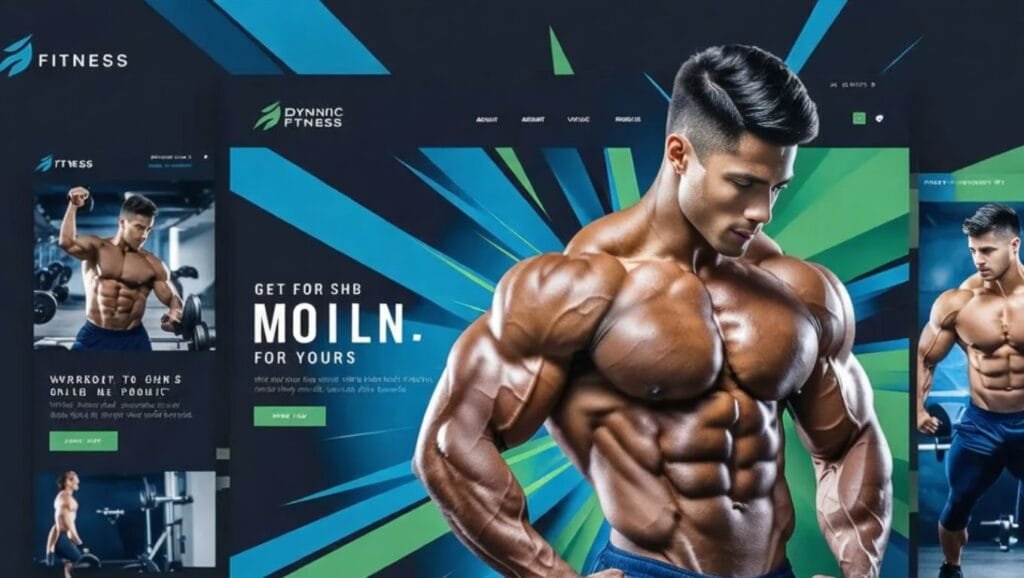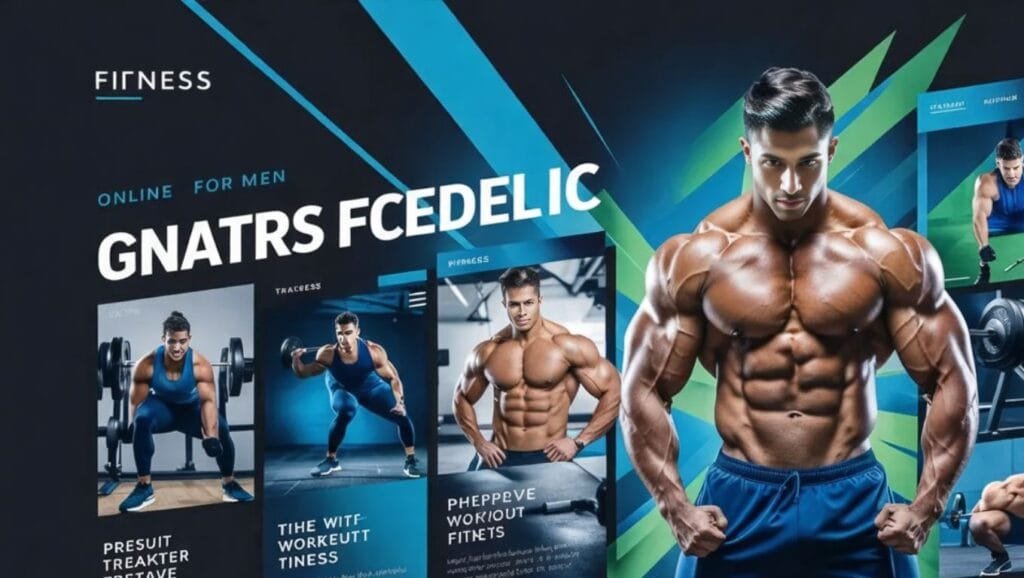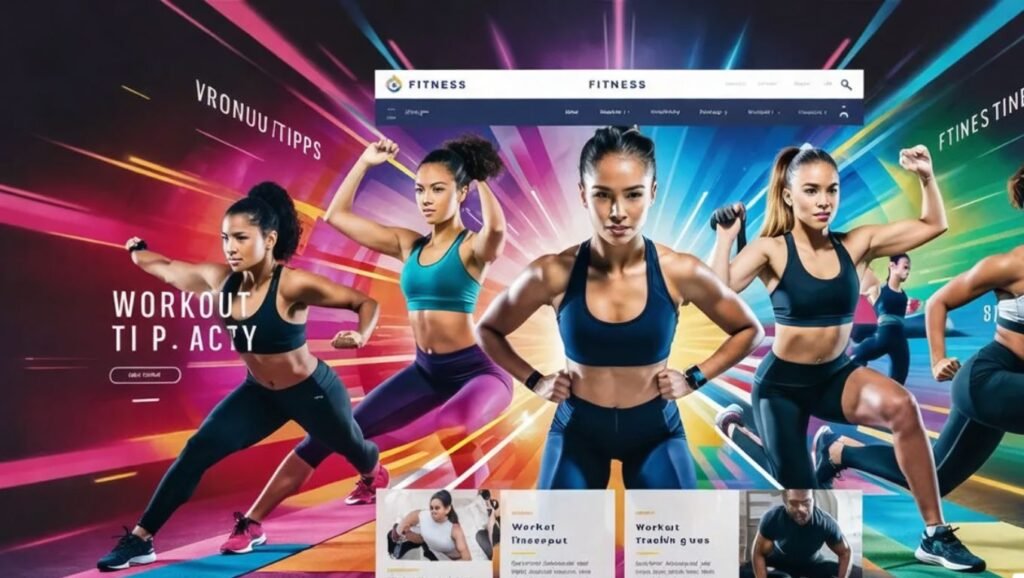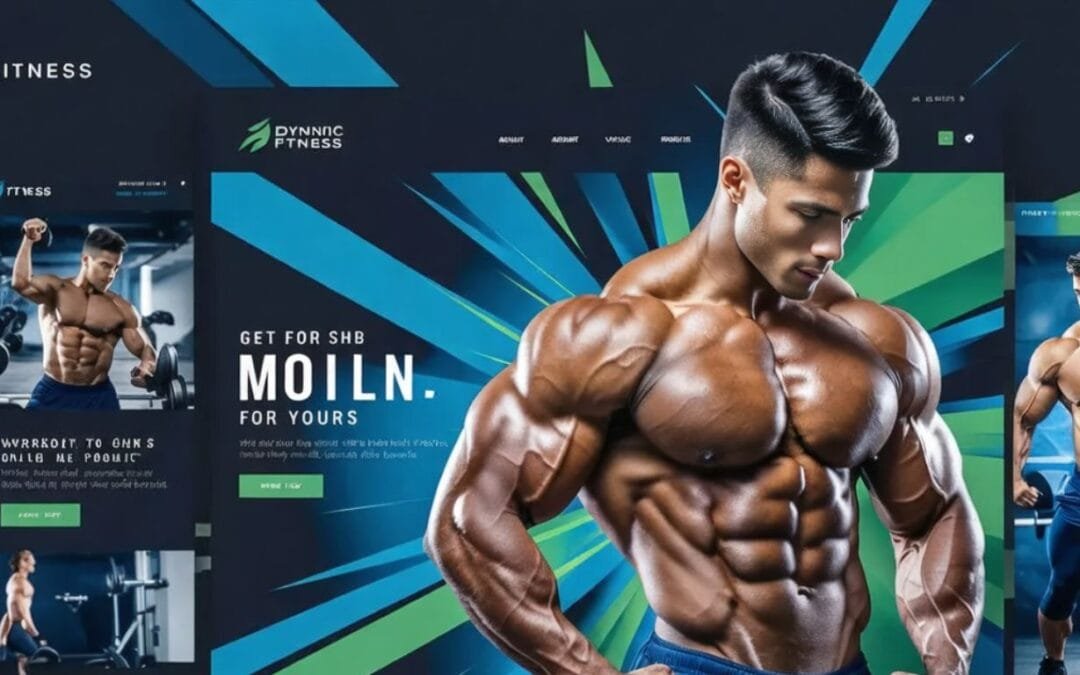Fitness Website Design: How to Create an Engaging and Effective Online Presence
In today’s digital age, having a robust online presence is critical for businesses across all industries, and the fitness industry is no exception. A well-designed fitness website not only helps attract new clients but also enhances brand credibility and provides an easy way for customers to learn more about your services. Whether you’re a personal trainer, gym owner, or fitness influencer, investing in an engaging fitness website design can boost your visibility and help you stand out in a crowded market.
In this blog post, we’ll explore how to create a high-converting fitness website that ranks on Google’s first page and truly resonates with your target audience.
Why Fitness Website Design Matters
The fitness industry is incredibly competitive, with thousands of websites offering similar services. This means that your website needs to make an impact within seconds of a visitor landing on it. A well-structured, visually appealing fitness website with seamless functionality not only boosts your ranking in search engines like Google but also keeps potential customers engaged and leads to more sign-ups or inquiries.
Good design is not just about aesthetics—it’s about functionality, user experience (UX), and converting visitors into loyal clients.

Key Elements of an Effective Fitness Website Design
- Mobile Responsiveness
- A large portion of users will access your website from their smartphones. A fitness website needs to be fully responsive, adapting to different screen sizes without compromising the user experience.
- Google also prioritizes mobile-friendly websites, so ensuring your site looks great on any device is critical for ranking higher in search results.
- Fast Load Time
- Website speed is an essential factor in SEO and user experience. A website that loads quickly leads to a better overall user experience and higher rankings in search engines. Optimize images, use clean code, and consider using a Content Delivery Network (CDN) to speed up your website.
- Clean and Attractive Layout
- The layout of your fitness website should be intuitive and easy to navigate. Use a clear structure with simple navigation so users can find what they’re looking for quickly.
- Use high-quality images and videos that showcase your services or gym space. People want to visualize what they’re signing up for.
- SEO-Friendly Content
- While it’s essential to design a visually appealing website, the content needs to be equally as compelling. Optimize all written content for SEO by incorporating relevant keywords like “fitness website design,” “personal trainer website,” or “gym website development” naturally into headings, meta descriptions, and body content.
- Google ranks websites higher when they have valuable, informative content, so include detailed descriptions of your services, client testimonials, and blog posts on relevant fitness topics to establish yourself as an authority in the fitness industry.
- Calls to Action (CTA)
- Encourage visitors to take action with compelling CTAs. Whether it’s a “Sign Up Now” button for a fitness class or a “Book a Free Consultation” link for personal training services, clear CTAs help drive conversions.
- Position CTAs strategically on your home page, services pages, and even in blog posts.
- Engaging Multimedia
- Videos, photos, and client testimonials are particularly effective in fitness website design. A video showcasing a workout session, a virtual tour of your facility, or client success stories can provide visitors with a more immersive experience and increase trust.
- Client Testimonials and Reviews
- Social proof is essential. People trust the experiences of others, so include authentic client testimonials and reviews prominently on your fitness website. This not only boosts your credibility but also encourages potential clients to contact you.
- Online Booking and E-commerce Features
- Having integrated booking and scheduling tools can make it easier for potential clients to sign up for a class or book a personal training session. Similarly, offering the ability to purchase products (such as workout gear or fitness programs) directly through your website is an added benefit.
- Ensure these features are easy to use and function seamlessly.
- Blog and Resources Section
- A blog is a powerful SEO tool and a great way to connect with your audience. Write regular posts on fitness tips, nutrition advice, workout routines, and wellness guides to attract visitors who are interested in fitness and health. This can help establish you as an expert in your field and build trust with your audience.
- Make sure to optimize each blog post with keywords related to fitness and web design to improve your search engine rankings.
Humanizing Your Fitness Website for Greater Engagement
In a fitness website design, humanizing your content and approach can make all the difference in creating a connection with your audience. Here are a few tips to make your site more relatable:
- Use Real Client Stories: Share real stories from people you’ve helped reach their fitness goals. This personal touch adds authenticity to your brand and helps potential clients feel connected to your services.
- Showcase Your Team: Introduce your fitness team with personalized profiles. This gives your website a more human feel and helps visitors get to know the people behind the brand.
- Interactive Features: Consider adding a live chat or messaging feature to your website. This allows users to ask questions in real-time, making your brand more accessible and approachable.




Optimizing for Search Engines (SEO Best Practices)
To rank your fitness website on the first page of Google, you must apply SEO best practices from the start:
- Conduct keyword research to identify the top keywords in your niche. Incorporate keywords like “fitness website design,” “gym web development,” or “personal trainer website” naturally throughout your site.
- Focus on on-page SEO by using optimized titles, meta tags, and descriptions. Use alt-text for images and ensure proper internal linking between pages.
- Build backlinks from reputable fitness blogs or influencers to enhance your domain authority.
- Leverage local SEO by optimizing for location-based keywords, which is particularly important for gyms and trainers targeting specific geographic areas.
Conclusion
Building a powerful fitness website design is about more than just aesthetics. It requires a balance of user-focused features, SEO optimization, and compelling content to create a lasting impact on your visitors. With mobile responsiveness, fast load times, engaging multimedia, and a focus on client relationships, your fitness website can become a valuable tool in growing your business and ranking on the first page of Google.
Invest in a well-structured, humanized website that reflects your brand’s personality, delivers an exceptional user experience, and drives results for your fitness business!
Frequently Asked Questions About Fitness Website Design
- Why is mobile responsiveness important for a fitness website?
- Mobile responsiveness ensures that your fitness website adapts to different screen sizes, providing an optimal user experience on smartphones and tablets. Since many users access fitness websites from mobile devices, a responsive design helps improve user engagement and SEO rankings.
- What features should be included in a fitness website?
- Key features for a fitness website include online booking tools, class schedules, personal trainer profiles, client testimonials, video content, and a blog. Integrating e-commerce for selling fitness programs or merchandise is also beneficial for revenue generation.
- How can a fitness website help my business grow?
- A well-designed fitness website increases your online visibility, helps attract new clients, and allows you to showcase your services effectively. With SEO optimization, you can rank higher on search engines, driving more organic traffic to your site and increasing conversions.
- How long does it take to build a fitness website?
- The timeline for building a fitness website varies depending on the complexity of the design, features, and content. On average, it can take between 4 to 8 weeks from initial planning to launch, but this can be shorter or longer depending on specific requirements.
- How can I optimize my fitness website for SEO?
- To optimize your fitness website for SEO, use relevant keywords like “fitness website design” in headings, meta descriptions, and throughout your content. Ensure your site loads quickly, is mobile-friendly, and includes optimized images with alt-text. Regularly updating your blog with relevant fitness content and obtaining backlinks from reputable sources also helps improve rankings.
